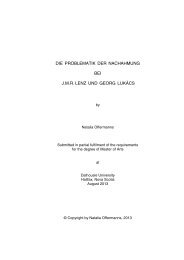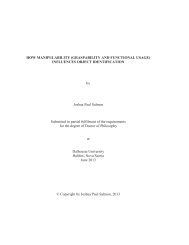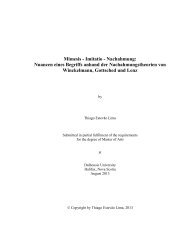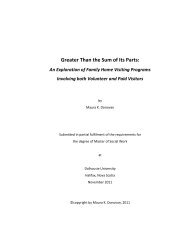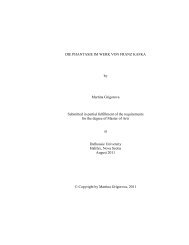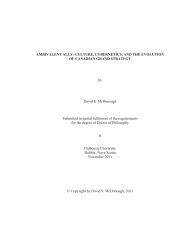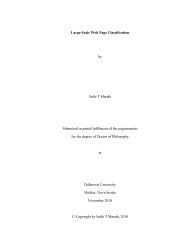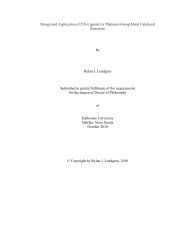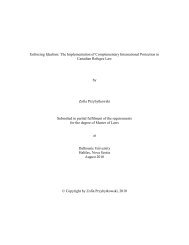ADAPTING TRISTRAM SHANDY by Adria Young Submitted in ...
ADAPTING TRISTRAM SHANDY by Adria Young Submitted in ...
ADAPTING TRISTRAM SHANDY by Adria Young Submitted in ...
Create successful ePaper yourself
Turn your PDF publications into a flip-book with our unique Google optimized e-Paper software.
Hutcheon’ s theory effectively situatesRowson’s version as a work that does both.<br />
Moreover, Hutcheon values the process of adaptation that re<strong>in</strong>terprets and re-presents an<br />
orig<strong>in</strong>al text <strong>in</strong> a new format. Similarly, Jay Bolter and Richard Grus<strong>in</strong>'s theory of<br />
“remediation” (47) expla<strong>in</strong>s how media <strong>in</strong> adaptations <strong>in</strong>teract; Bolter and Grus<strong>in</strong>’s view<br />
of media as <strong>in</strong>terdependent and <strong>in</strong>termedial offers a mode of analysis that allows for<br />
Hutcheon’s “double process” of adaptation, while it also regards the material aspects of<br />
the remediated text (20). “The very act of remediation,” Bolter and Grus<strong>in</strong> write, “ensures<br />
that the older medium cannot be entirely effaced; the new medium rema<strong>in</strong>s dependent on<br />
the older one <strong>in</strong> acknowledged or unacknowledged ways” (47). Both Hutcheon’s<br />
pr<strong>in</strong>ciples of adaptation, and Bolter and Grus<strong>in</strong>’s understand<strong>in</strong>g of media, offer modes of<br />
analysis that account for the qualities of Rowson’s adaptation, and how those qualities<br />
<strong>in</strong>teract with the orig<strong>in</strong>al novel.<br />
Rather than focus on the fidelity of the text-to-text transfer, Hutcheon’s theory of<br />
adaptation broadens the terms for evaluat<strong>in</strong>g the success of literary adaptations. Rowson<br />
adaptsTristram Shandy <strong>in</strong> an <strong>in</strong>terpretive and creative way. By challeng<strong>in</strong>g the<br />
conventions of the graphic novel, and <strong>in</strong>corporat<strong>in</strong>g the <strong>in</strong>tertexts and contexts of<br />
Tristram Shandy, Rowson re-presents Tristram Shandy <strong>in</strong> a new medium through his<br />
retention of the qualities of Shandyism. Despite the <strong>in</strong>ability to adapt Tristram Shandy as<br />
a direct-transfer or modernization, Rowson’s version is a recognizable adaptation because<br />
the spirit of the text, its conceptual elements, are presented <strong>in</strong> a new medium.<br />
I. The Medium<br />
33



